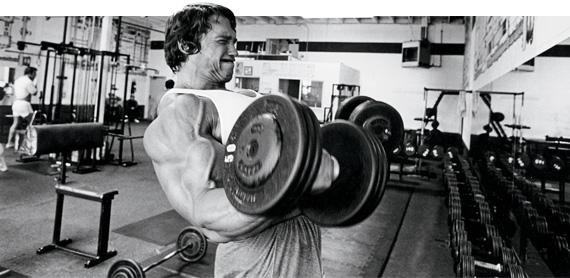Whenever we see a beginner using momentum while lifting, we know that he/she is unaware of the proper form of this exercise. For example, in the barbell curl: swing the bar and use the body's momentum to roll the dumbbell upwards, rather than exclusively using the biceps muscles.
But what about advance lifters or professional athletes, many of whom use momentum during certain exercises? We cannot say that they are unaware of the correct movement.
The real difference is taking the impulse from ignorance and using it consciously and calculatedly.
Both are forms of “cheat reps”. The difference is intentional and unintentional, with the latter being more dangerous. In both cases, however, the use of “external impulse” is important, i.e.

For example, using leg drive to push a heavy barbell during the shoulder press instead of using leg drive throughout the entire exercise, even with submaximal weights.
Move your upper body up and down to complete the last few reps of the heavy T-bar row/bend-over barbell row instead of moving your upper body up and down from the first rep.
Use momentum in the last few reps to lift a dumbbell on a side raise, rather than using momentum from the first rep.
Therefore, cheat repetitions are carried out consciously, usually as a finisher, in order to fight past failure. There are two options here, either have your training partner help you complete the rep while maintaining good form, or simply use some momentum to complete the rep.
However, this type of cheating or swing use must be minor and done in a deliberate manner. Excessive action can result in injury. It is better to do a partial rep, a rest set, or enlist the help of a partner than to use too much momentum to complete the rep.
If the goal of the movement is hypertrophy and cheating has caused the intensity and duration of tension in the target muscles to decrease, you are cheating too much.
Momentum is also an important factor in resistance training itself and can greatly influence the amount of load that can be successfully lifted and the amount of effort required to do so. For one thing, we've seen intentional use of momentum to move beyond failure. Then there are certain movements that simply cannot be accomplished without sufficient momentum. When it comes to the snatch as well as the clean and jerk, it is important to give the dumbbell enough momentum during the pull phase so that it reaches the height at which it can be caught by the lifter.
Acc. According to one study, the greater the momentum of the lifted load, such as that of a bar or dumbbell, the longer the load will maintain its motion against gravity, even if the exerciser does not apply any additional force to it. Consequently, the impulse can be used to overcome biomechanical weak points in an elevator. In fact, this phenomenon is often exploited by strength athletes such as powerlifters and weightlifters.
If the impulse to the load is applied at a point in the lift where the target muscles are biomechanically in a poorer position to exert effective force, this weakness can be overcome so that greater force can be applied in the range of motion better suited to overloading the target muscles.
While it can be said that developing momentum of loading is desirable in competitive sports where the goal is to maximize the amount of weight successfully lifted, the role of momentum in hypertrophy-oriented training is far less clear.
The above study examined the use of “external impulse” for hypertrophy-specific training using side shrugs as an example. The results suggest that using moderate impulse at the beginning of each repetition in a set may facilitate the use of heavier loads and better overload of muscles in biomechanically advantageous positions. Excessive use of momentum resulted in a reduction in load on target muscles and a reduced overall hypertrophy stimulus, discouraging its use.
The use of momentum in certain movements is also strictly prohibited, e.g. E.g. heavy squats, deadlifts, good morning exercises, etc. Drop the weight if you can't complete the rep. The use of momentum in such cases is a sure risk of injury.


